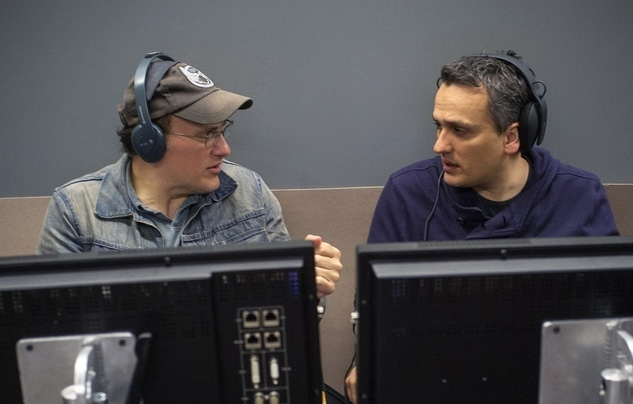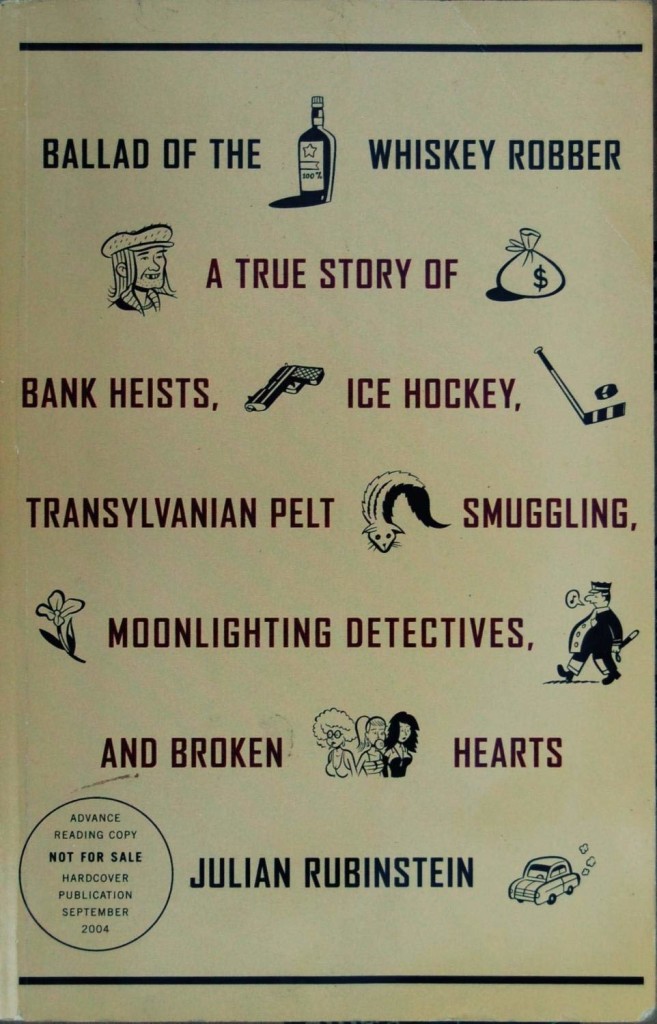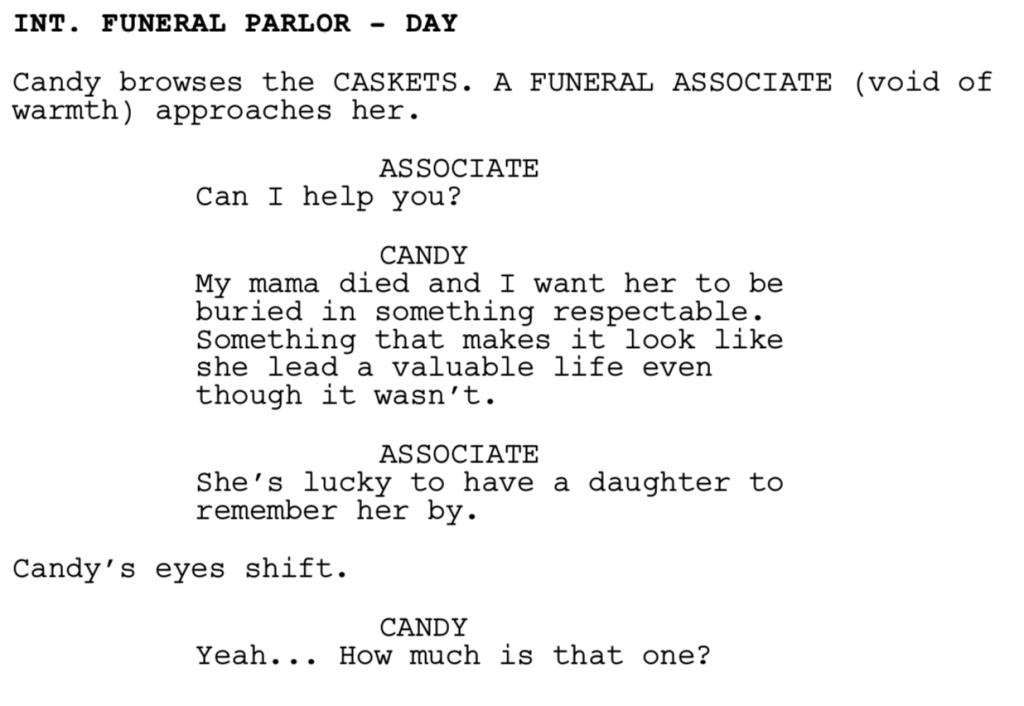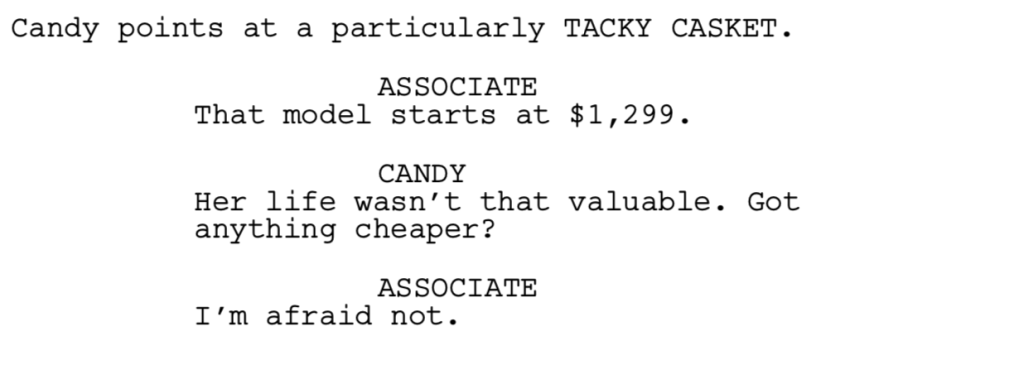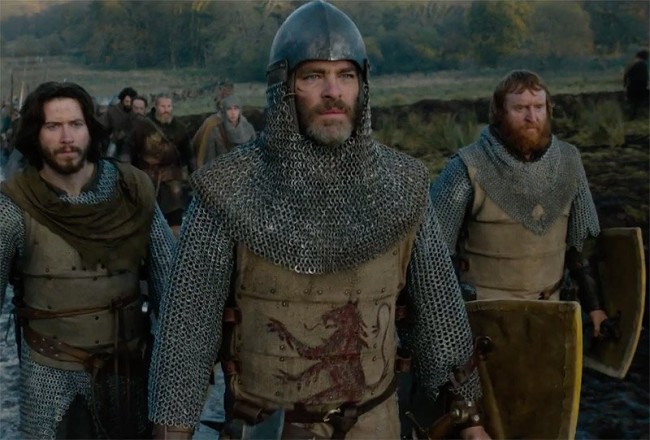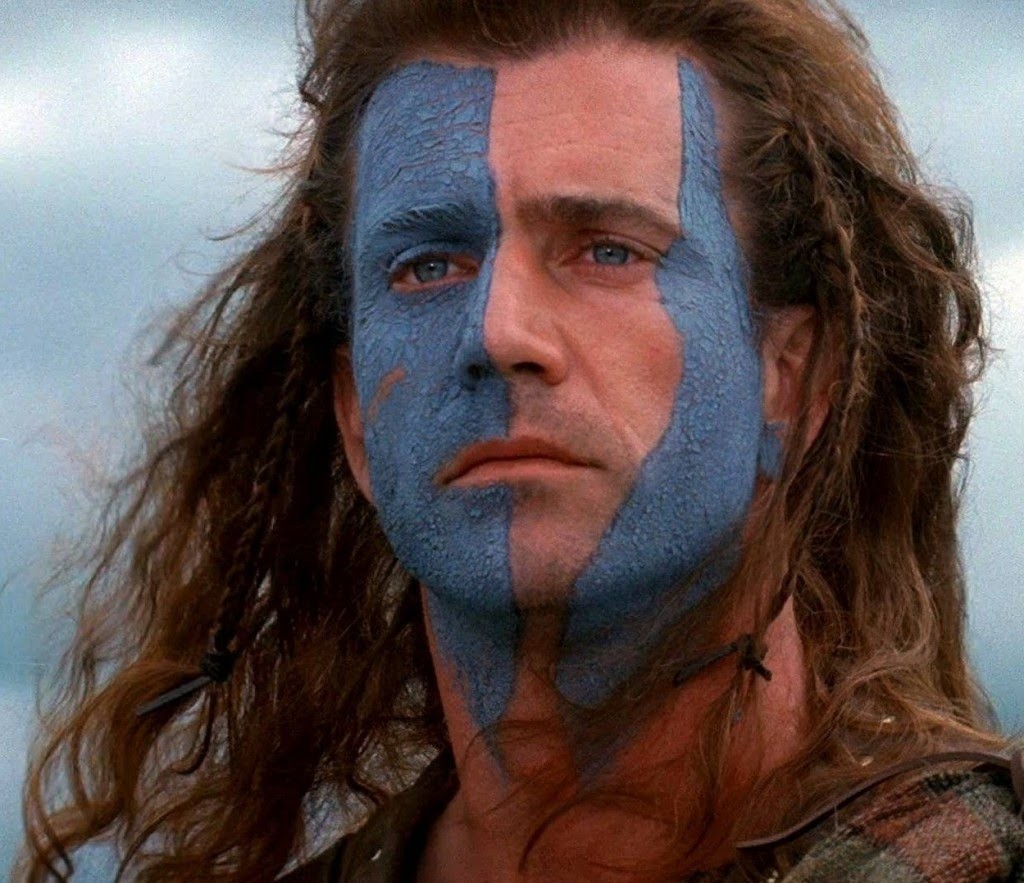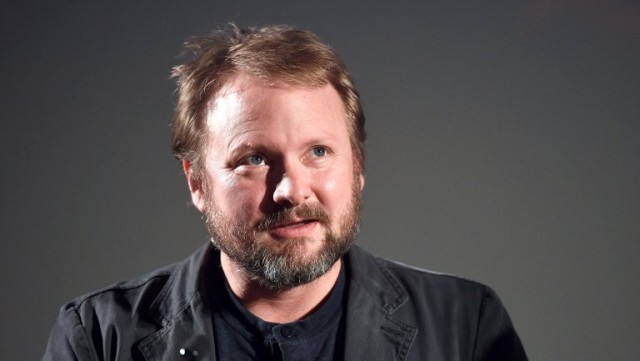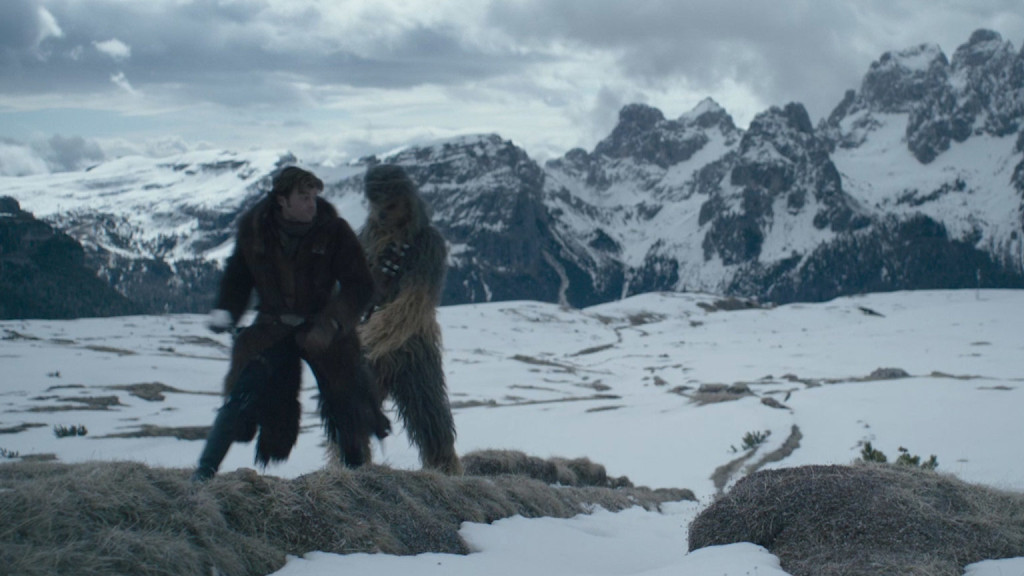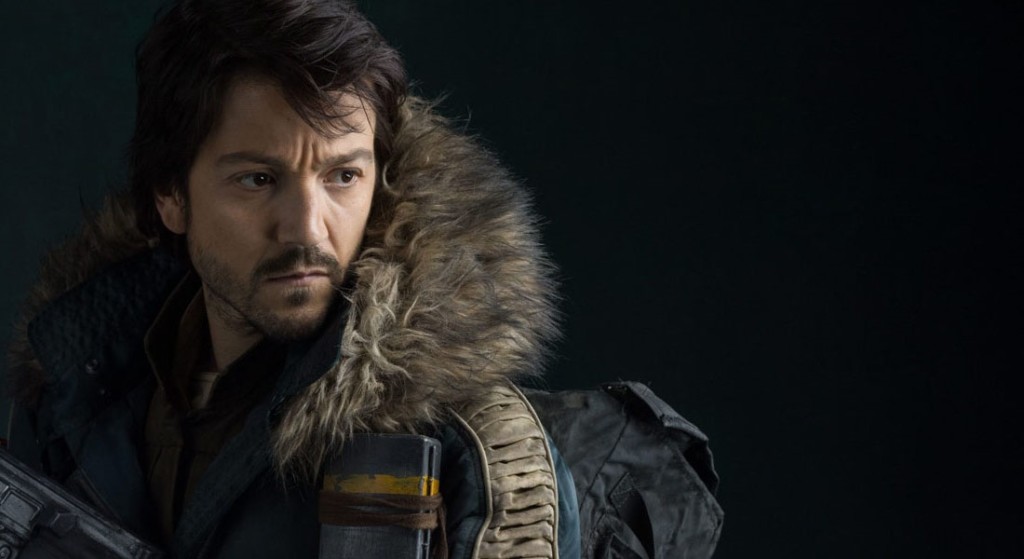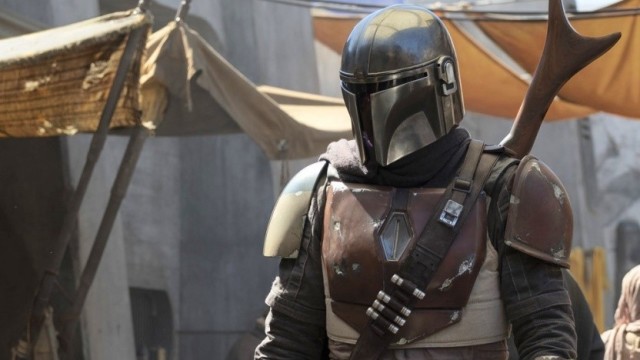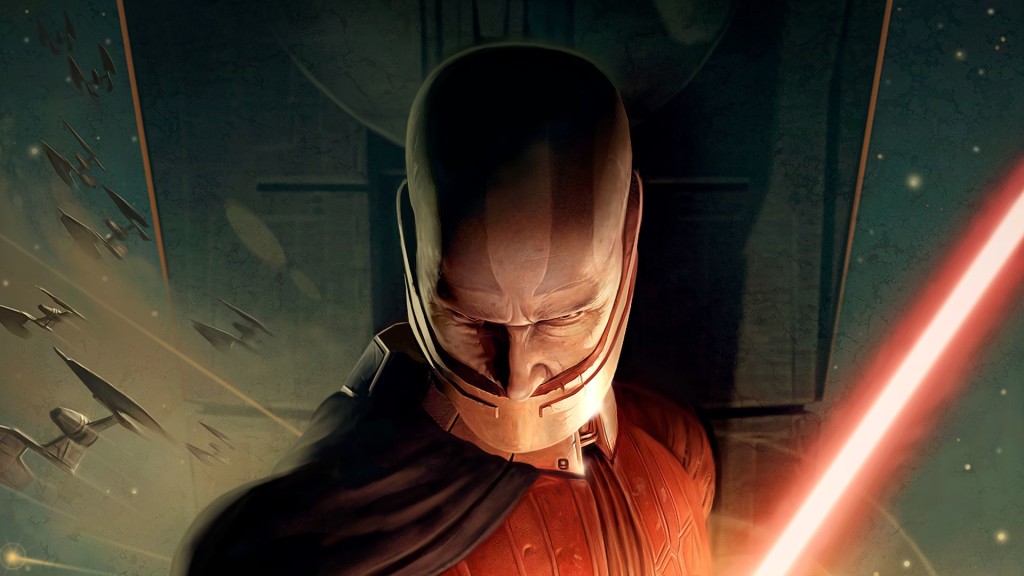I’m sure you’ve heard this stat before. 97% of screenplays are bad. Or even 99% of screenplays are bad. Doesn’t take a whole lot of math to figure out, then, that only 1% of screenplays are good. This stat always messed with my head. How does one break into the top 1% of anything? It sounds impossible. So whenever I heard that stat, I conditioned myself to ignore it. Now that I’ve read a ton of screenplays, I can confirm that the stat is correct. But the numbers aren’t as daunting as they seem. By going through the percentages, you realize that a large chunk of the 99% are people who aren’t nearly as serious about this as you are. And from there, it’s a matter of working hard and writing a lot. But we’re going to get specific. Below is a step by step breakdown of how to get you to that coveted 1% Let’s jump into it.
Reaching the top 70% – All you have to do to beat out the lowest 30% of screenwriters is to write a second screenplay. The large majority of screenwriters cling to one “brilliant” story they’ve got (usually their life story or some really cheesy popcorn movie they thought of when they left Transformers 4) and never write anything else. Because these are first scripts, they’re always terrible. This means that by simply writing a second screenplay, you’re ahead of all these numbskulls.
Reaching the top 50% – I realize this is redundant, but it’s true. All you have to do to get to the top 50 percentile is write a third script. Most people who try their hand at screenwriting believe it’s easy. That they just need to get that one great idea down on paper and they’ll be rich. And, if that doesn’t work, oh yeah, they’ve got that other idea. So they’ll write that too. But once that doesn’t shock the world (and why wouldn’t it – everyone masters everything the second time they do it), they consider this practice too hard and give up. By merely writing a third screenplay, you display that you are serious about the craft, and therefore have half of all the screenplays out there beat.
Reaching the top 45% – You read Scriptshadow. No, seriously. If you’re continuously reading screenwriting sites with strong educational content, it means you’re constantly learning. Every tip you can pluck from Scriptshadow and implement into your writing gets you that much closer to the top. It doesn’t have to be Scriptshadow, of course. It can be one of those other sites. As long as you’re constantly educating yourself, you’re getting closer to the top of the mountain.
Reaching the top 40% – Getting structure down. If you’re going to get out of F territory (anything below 60%) you need to know how to structure a screenplay. It tends to take most people 5 or 6 scripts to get a good feel for structure. That means understanding the 3 acts. Understanding basic elements within those acts (inciting incident, mid-point shift, the obstacle-heavy second act, the “All is Lost” turn that takes us into Act 3). Getting this down allows you to properly pace your script and build your story towards an exciting conclusion, so it’s necessary.
Reaching the top 35% – Dialogue. You must overcome your on the nose tendencies. No more bland lifeless chit-chat between characters. No more endless expositional dialogue. You need to learn how to “dress up” dialogue (dialogue that has a bit more spark than every day conversation). Write dialogue individual to each character. Create dialogue-friendly characters. Use subtext. Use dramatic irony. It’s easy to spot amateur writers because of how boring and lifeless their dialogue this. Once you learn this stuff, your scripts become a lot more fun to read.
Reaching the top 30% – You must get feedback on your scripts, and you must get it from more than one person. You can only improve so much if you’re not getting real-world feedback on your writing. As a young screenwriter, I remember thinking I had it all figured out. That I didn’t need second opinions. A friend encouraged me to get feedback, even pay for it (what???) and after a while, I surrendered and got a consultant. One of the first things he pointed out was that my writing had zero voice. It was bland and lifeless. He compared a page in my script to one from a professional script and I immediately realized he was right. So you need feedback to get better, guys. And the reason I say more than one person is that some writers give their scripts to a single person – a friend or family member – who’s too sweet to give hard-hitting feedback, the only kind of feedback that actually helps you.
Reaching the top 25% – You have to be someone who gets their scripts out there. I’ve said this before but I’ll say it again. This is a numbers game. The more people who read your script, the better the chance you’re going to find someone who likes it. I’ve seen some writers who had the talent to make it but they didn’t have the hustle. A great example of a hustler is the writer who wrote Final Journey, a script about an eskimo woman who’s forced out of her village and must survive alone on the savage arctic tundra. The writer got a lot of no’s on that script but he hustled. Eventually he found someone in the industry who loved it, sung its praises, and the script ended up making the Black List.
Reaching the top 20% – Concept choice. It’s strange how long it takes screenwriters to figure this out. But unless you’re coming up with marketable concepts and writing inside well-established Hollywood genres, you’re going to have a tough time making it. I realize this lies in stark contrast to the example I used above (Final Journey). But learning to write movies that Hollywood wants to buy is a critical momentum shift in a writer’s career that changes the way their scripts are received. — Oh wow, we’re getting close to the top of the mountain. And there’s been nothing asked of us that’s that hard. Maybe getting to the 1% isn’t impossible after all.
Reaching the top 15% – Understanding character and relationships. This is huge – HUGE HUGE HUGE. You must learn how to make a character sympathetic. How to give a character a flaw. How to arc a character. How to do so naturally (so the character arc doesn’t feel like it came out of a screenwriting book). How to construct unresolved issues between characters and use the script to explore and ultimately resolve those issues. The writer who gets to the point in the journey where they realize it’s not about the plot, but about the characters, is the writer who establishes themselves as a real screenwriter. I’m not going to sugar-coat it. Learning how to do the above effectively takes between 1-3 years, depending on things like talent and how in tune you are with human psychology.
Reaching the top 10% – Keep going. This is going to sound like lip service but I promise you it isn’t. A lot of writers quit at this stage, mainly because they’ve been at this for so long. They feel like they understand the craft really well. And they do. Yet, somehow, they still haven’t made it. It messes with their head. They start wondering if it’s impossible, that you really need to have a famous dad or uncle in the business. And the pain of sending one more script out there that doesn’t stick is too much to bear. So just by the nature of staying in there, of continuing to fight, you give yourself a chance at this.
Reaching the top 5% – This is where the rubber meets the road. Once you’ve gotten this far, you’re competing against writers who are either a) insanely dedicated, b) very talented, or c) both. I remember when I used to play soccer as a 10 year old kid. I’d play against these kids who were sucking their thumbs in the corner of the field while watching squirrels zip around the trees. You could dribble past most kids simply by waiting for them to fall down. Then I made the All-Star team and all of a sudden, everyone was ferocious, everyone was strong, everyone was GOOD. That’s similar to what you’re dealing with when you get to this point. You’re not dealing with people who don’t know you have to capitalize a character when they’re introduced. To me, this section is all about outworking the competition. You have to write more. You have to rewrite more. You have to get your scripts out to more people. You have to keep learning. You can’t slack off once you’re this high on the mountain. Write write write write and then write some more. That’s the only way you rise above the All-Stars.
Reaching the top 1% – To get to the top, you need everything I mentioned above, and a script that displays one or more of these three things: A strong voice, a really strong idea, stellar execution. The first should be obvious. The overwhelming majority of the scripts readers read are boring. It’s so refreshing when they get a writer who sees the world differently. Who writes in a fresh manner that makes the mere act of reading the script fun. Christy Hall (Daddio) is the current poster-child for voice. The second is a really strong concept. A fun exciting concept is the ultimate screenwriting deodorant. All those other script problems disappear while the reader imagines how cool this movie would look in a trailer. Jurassic Park, The Martian, A Quiet Place. The third is for the writer who doesn’t have a crazy-unique style or a killer premise. But they they’ve done all the hard work, they know this craft inside and out, and they’re able to nail every nook and cranny of the screenplay. Pretty Woman comes to mind. The Equalizer. The Goonies. Toy Story. None of these were voice-y world shattering concepts. But the scripts were executed perfectly.
So, you see, once you break the numbers down, it’s really not that bad. The majority of your competition doesn’t take screenwriting seriously enough for you to worry about them. The truth about success in screenwriting is no different than success anywhere. You need to put in the time and the work. If you do that and you have a reasonable level of talent, you can succeed at this. Especially since I just gave you the road map to do so. Now back to writing!
Genre: Biopic
Premise: The story of an eccentric bank robber who captured the nation’s sympathy in post-Communist Hungary.
About: Today’s script made the 2008 Black List. It was adapted by Rich Wilkes, who wrote the original Vin Diesel vehicle, “XXX.” Normally, that would be cause for concern, but Wilkes wrote a funny draft of Neil Strauss’s Motley Crew biography, “The Dirt,” which I reviewed on the site at the beginning of the year. What’s interesting about this project is that the Russo Brothers commissioned the draft. This was before Captain America and, later, Infinity War. And while you’d have to assume they’ve moved on, I’m curious to see what got them interested in the first place.
Writer: Rich Wilkes (based on the nonfiction book by Julian Rubinstein)
Details: 125 pages
As a professional screenwriter in Hollywood, one of the most common assignments you’ll be up for is book adaptations. More specifically, biographies. In this world, books like “Ballad of Whisky Robber” appear to be gold mines. One look at the Amazon summary (bank heists, ice hockey, pelt smuggling) and you’re thinking, “How can this NOT be entertaining?” But it’s easy with books like this to get lost in the zany, and forget that you’re writing a character piece. If we don’t love and root for your main character, it doesn’t matter how many wild stories he was a part of. We’re going to be bored. Was I bored with Ballad?
Back in the early 70s, Attila Ambrus was born a bastard child of Romania and Hungary. Unfortunately, he was forced to grow up in the lesser of the two countries, uber-Communist Romania, and therefore spent most of his early life trying not to starve to death. Once he was 20, he snuck across the border to the more Westernized Hungary, a place where he assumed all of his dreams would come true.
Instead, he spent his first year in Budapest homeless. A former hockey player, Attila convinced the local minor league team to take him on… as a janitor. While this may seem like hell to you, to Attila, it was like winning the lottery. Finally he had a place to sleep (the janitor’s closet) and enough money to buy a meal.
But Attila’s dreams were always bigger than that, and when the U.S.’s number 1 import – CRIME – started sweeping through the previously communist nation, Attila became an early adopter. By merely donning a cheap wig and some sunglasses, Attila realized he could walk into any post office in the city – all of which were run by women – and rob them. Soon, Attila was rolling in the dough, and getting the respect of the hockey team.
The crime boom necessitated that a new police division be erected, which was led by a man named Laszlo Juszt. Laszlo didn’t really know what he was doing. Nobody did. But he set his sights on this Post Office Robber, figuring that a high profile bust would give the division legitimacy. The whole thing was a bit comical, since Attila was notorious for being drunk during all of his robberies. But eventually, he’d get caught, putting an end to the ballad of the Whiskey Robber.
This was pretty much a giant mess. And if you read the full book title (“Ballad of the Whiskey Robber: A True Story of Bank Heists, Ice Hockey, Transylvanian Pelt Smuggling, Moonlighting Detectives, and Broken Hearts), you might have guessed that was coming. The problem with these “whole bunch of crazy shit happens” biopics is that it’s very easy to lose focus. I was just talking to a writer about this a couple of weeks ago. He’d written a story about this guy with a really eccentric life and my problem with the script was that I didn’t know what it was about. The character’s life – and with it, the story’s focus – kept changing every 15 pages.
Ballad of A Whiskey Robber wasn’t as unfocused as that script. But it bounced around enough that I lost interest in the hero’s journey. Which is too bad because the writer does a great job setting up a likable hero. Attila is half-Romanian and half-Hungarian, yet ironically, neither country will claim him. So he’s essentially a nobody. From his very first breath, he has no place on this earth.
His mom disowns him. His dad is an asshole. He doesn’t have any particular talents. He starves. He falls in love, gets his girlfriend pregnant, only for her to abort the baby behind his back and then dump him. It’s hard not to sympathize with this guy.
But once he overcomes the initial obstacles in Budapest, the whole thing becomes silly. He’s the wacky wig-wearing bank robber who drinks and gambles a lot. It was like his whole heartbreaking character assembly was for nothing. Now he’s the clown. Once that happened, I completely lost interest.
And I’ll be honest. I started skimming. I would read a page, have to re-read it to understand it, then read the next page, the same thing would happen. I’ll take you behind the curtain for a second. If a reader finds himself doing that for more than a few minutes, they’ll start skimming. They’re not going to put themselves through torture to try and understand a script that they’re not enjoying.
So I read the last 40% of Ballad, but I was only half paying attention. And since little of my brain was occupied, I had time to wonder why the Russos attached themselves to this project in the first place. When has there ever been a successful biopic made in America about a communist (or post-communist) character? I’ve said this before. Any Eastern European accent is a box office killer. Some recent examples: Child 44, Red Sparrow, K-19. So why did they think this had any chance of getting made?
Could the script have been saved? Maybe. I find with biopics, you need to identify the key relationship in the script and build everything around it. Because, remember, human lives don’t have the perfect three act structure required to keep a story focused. So you need to find your focus elsewhere. That tends to come through a main relationship that you keep coming back to. In Catch Me If You Can, it’s the relationship between Frank Abagnale and Carl Hanratty. In The Wolf of Wall Street, it’s the relationship between Jordan Belfort and Naomi. Ballad didn’t have that. Leaving it too goofy and wily for me to give a shit about what was going on. It’s not surprising, then, that this never got made. It wants to have it both ways (super deep and emotional… but also wacky and hilarious!). No thanks.
[ ] What the hell did I just read?
[x] wasn’t for me
[ ] worth the read
[ ] impressive
[ ] genius
What I learned: When you jump forward in time, you need to make it clear. I’ve been reading a lot of scripts lately where the writers haven’t been clear about where we are in time. Early in Ballad, we get this slugline…
EXT. VILLAGE SMOKEHOUSE – ROOF – DAY – NINE YEARS LATER
Seems clear on its own. But in the middle of a script, it’s easy to miss. Particularly because a lot of readers skim sluglines. A simple fix here would be to BOLD the “NINE YEARS LATER.” Any reader would see that. Another option is to do a title card, which I ALSO would recommend bolding. So it would look like this…
EXT. VILLAGE SMOKEHOUSE – ROOF – DAY
Title Card: Nine Years Later
Genre: Dark Comedy
Premise: When a jobless government subsidizing loser wins the Arizona lottery, he must figure out a way to divorce his hate-filled wife in order to keep the winnings for himself.
About: Today we have a 2018 Nicholl finalist (there were six finalists and four winners). Our lone 2018 Nicholl winning script review resulted in a tepid thumbs up. Will today’s script fare better?
Writer: Avi Glick
Details: 122 pages
A lottery win is one of the easiest ways to pull an audience into a story. Who isn’t fascinated by a character going from poor to stinking rich within a matter of seconds? Strangely, however, lottery-based ideas haven’t fared well in the marketplace. As easy as it is to begin their story, writers have trouble coming up with what happens next. My favorite lottery film ever is Waking Ned Devine. But after that, the pickings get slim. So when I saw that a lottery-centric script had made it to the Nicholl Finals, I approached it skeptically.
40-something Eddie lives in a trailer in Apache Junction, a downtrodden Native American community in Arizona. Eddie isn’t that smart. He doesn’t have a job and spends the majority of his income – income that comes from the government and his wife, Candy, who runs a Do-It-Yourself waxing business – on lottery tickets. Candy gave up on Eddie a long time ago, and these days only talks to him to remind him that she’s filing for divorce soon.
How ironic is it, then, that Eddie wins the lottery. 1.3 million dollars to be exact. No sooner has Eddie won the prize than he realizes he needs to hide it from his wife, who will most certainly divorce him and take half his winnings. So Eddie enlists the help of his greedy accountant, Shlomo, and, to keep Shlomo in check, Neo-Nazi Kelly Mc’Mc’N. Eddie’s plan is to give the ticket to them, have them claim it, then funnel the money back to him over time.
Meanwhile, Candy, who’s cheating on Eddie with his nudist brother, finds out she’s pregnant. Excited, scared, and confused, she heads over to her parents’ place, only to find out that her worthless mom is dead. Upon finding her, Candy discovers a lottery ticket in her mom’s hand – a WINNING lottery ticket. That’s right, there are TWO winning tickets, which, unbeknownst to each other, both Eddie and Candy now have.
Candy visits a local lawyer in order to plot a divorce whereby she doesn’t have to give Eddie a dime. Meanwhile, Shlomo and Kelly go searching for Eddie’s ticket behind his back, which isn’t difficult since everyone in town knows that Eddie’s secret hiding place is an abandoned trailer on the outskirts of town. This is followed by Candy’s lawyer plotting her own plan to get the money from Candy.
When Candy hits Eddie with the divorce, Eddie becomes convinced he still loves his wife. He hence sets out to buy his lifelong obsession, a yacht, despite the fact that there isn’t any water in Apache Junction. He figures that a man who owns a yacht is an important man, and that Candy would never want to divorce an important man. Of course, Candy’s got other stuff to deal with – like the fact that Shlomo and Kelly have learned that she possesses the other lottery ticket. Seeing as her involvement makes them 650 thousand dollars poorer, they’d like her to meet an untimely demise. Which is what they set about doing. Will they succeed? Will Candy end up with the money? Will Eddie? Will Candy and Eddie reconcile? Check out “A Yacht in The Apache Junction” to find out.
First off, big props to screenwriter Ari Glick. This man knows his audience. Within the first page we establish a disenfranchised minority people who America screwed over. We then mention Trump and Putin, border disputes, and school shootings! Talk about grabbing the Nicholl reader’s attention! I’m sure this one shot to the top of the pile after that page.
Luckily, Apache Junction isn’t yet another Nicholl social justice message disguised in a screenplay costume. It’s actually a really funny dark comedy about greed with some of the most fun and original characters I’ve read all year.
The writer’s biggest strength is how distinctive he makes all his characters. A Comanche cop living in an Apache region who reads The Power of Positive Thinking. A greedy Jewish accountant. A crazed Neo-Nazi who he must team up with. A wife who owns a self-waxing business. A fat nudist duplicitous brother. Every character here pops off the page.
I know what you’re going to say so stop your stampede to the comments section. “They’re just quirky for being quirky’s sake, Carrrrrson!” I agree with this critique when the execution of characters like this is lame. But there is no lame here. Every character is hilarious. I dare you to read this and not laugh out loud at least 15 times. It’s that funny.
I mean, at one point Candy, who doesn’t want to waste money on her mom’s funeral, solves the problem by dumping her body into a nearby gorge. lol. And here’s the scene right before that, where she’s looking for a casket.
The script also does a nice job of keeping the plot exciting utilizing both plot twists and plot thickening. Most writers don’t realize they have both of these options at their disposal. They believe they only have the first. Therefore, if they want to jolt a stagnant plot, they throw in a giant plot twist.
But sometimes you don’t want the foundation-shattering aftermath that comes with a plot twist. Sometimes you just want a light jolt, and for these moments, some good old fashioned plot thickening will do. I’ll give you an example of each, since Apache Junction contains both.
A plot thickening is when we find out Candy is pregnant. It’s not big enough to be a twist, but it ups the stakes in Candy’s journey, making us a little more interested in her plight. A plot twist would be when Candy gets her hands on the other ticket. That fundamentally changes the story, since now both characters are moving mountains to keep information from each other. Good writers know when they need to thicken the plot and when they need to twist it.
Those who dislike Apache Junction will probably point to the fact that everyone’s a terrible person. So why would they care about anybody? I typically agree with this critique unless the characters are extremely funny. And the characters in Apache Junction are all extremely funny.
I suspect that Avi may have gotten this note at some point, because there’s an uber-likable 13 year old Native American girl who narrates the story despite not being a part of it. She becomes the goodness that the rest of the characters are lacking. Even though her story finally collides with our heroes in the end, I’m unconvinced her inclusion was necessary. And, at 122 pages, getting rid of her would’ve brought this script closer to the 110 pages it needs to be.
But even with this gripe, this is easily one of the better Nicholl scripts I’ve read in the past few years. Well worth checking out.
[ ] What the hell did I just read?
[ ] wasn’t for me
[xx] worth the read
[ ] impressive
[ ] genius
What I learned: There’s an old phrase that we now take for granted – “The plot thickens.” – But, as a writer, this is a very important tool in your screenwriting tool belt. I read tons of scripts where very little happens for large chunks of time. Since readers get bored quickly, thickening the plot every once in awhile is the equivalent of picking up some candy at a rest stop during a road trip. It doesn’t make the trip any more exciting. But it gives you an infusion of energy that tides you over until the next big experience.
Today’s Braveheart sequel review comes with a trio of must-know screenwriting lessons.
Genre: Period/Action
Premise: In the 14th Century, Scottish King, Robert The Bruce, attempts to free his country from England once and for all.
About: This film has been making noise for numerous reasons. First, it positioned itself as an obvious spiritual sequel to Mel Gibson’s Braveheart. For those who don’t remember, Robert the Bruce was the troubled Scottish noble in that movie who waffled back and forth between supporting and undermining William Wallace. Outlaw King was directed by David Mackenzie, whose only other well-known movie was 2016’s Hell or High Water. This would explain how Mackenzie was able to get fast-rising star Chris Pine to play Robert the Bruce. The film received a 120 million dollar budget from Netflix, where it debuted this weekend.
Writer: Bathsheba Doran & David Mackenzie & James MacInnes (additional writing by David Harrower & Mark Bomack)
Details: 120 minutes
While it pains me to say it, Outlaw King is not a good movie. However, I’m ecstatic that I saw it. I don’t think there is a better screenwriting lesson out there than watching Outlaw King and Braveheart back to back. Each creator tells what is, essentially, the same story, with one succeeding and the other failing. This allows you to directly compare why Braveheart succeeds and Outlaw King does not. It’s a fascinating exercise.
If you didn’t have time to check Outlaw King out, it introduces us to Robert the Bruce during his surrender, along with the rest of the nobles, to King Edward of England. Afterwards, Robert heads back to Scotland, where he marries the goddaughter of Edward, Elizabeth. Since Robert lost his previous wife to childbirth, he’s not keen on falling in love again, and refuses to consummate the marriage.
A couple of years later, Robert is shaken when the English celebrate wildly at the capture, torture, and killing of William Wallace. He decides he doesn’t want to play by the English’s rules anymore (or pay their taxes), and constructs a plan to gain independence. This requires persuading a high-ranking Lord of Scotland to join him. And when this Lord doesn’t agree, Robert kills him, allowing him to don the sole crown of Scotland. Robert is now their king.
Robert comes around on the marriage thing, falling in love with his wife, who helps him plot his attack. Robert must round up the rest of the Scots (who are divided into clans) and convince them to help. Some of them do but most don’t. Later, Elizabeth is kidnapped by the English, adding an immediacy to the whole ordeal. Robert arrives at the hill where the big battle with the English will take place, only to realize he’s vastly outnumbered. He inspires his men to fight anyway, where he leads an impossible victory, finally gaining freedom for his country.
Okay, where do I begin?
There are three primary reasons why Braveheart is leaps and bounds better than Outlaw King. The first is that William Wallace is the most active hero in cinema history. Any screenwriting class you go to will promote the importance of an active hero. This is because when your hero really wants something, he’s always going to be moving. He’s always going to be charging forward. This is when movies work best, when the narrative is charging along, full steam ahead.
William Wallace wants freedom. He says it over a dozen times in Braveheart. And he’s willing to do anything to get that freedom. If you watch Braveheart, you’ll notice that the only time we’re not charging forward to the next battle, or in the battle itself, is to set up when the next battle is coming. William Wallace MUST obtain freedom, and will fight as many battles as he can to do so.
Robert the Bruce, meanwhile, is a more reserved character. He wants freedom, but he doesn’t want it at all costs. And the narrative reflects this. We’re moving forward towards a goal – freedom – but we do so at a measured pace, reflective of the man trying to achieve it. I’m not saying that movies don’t work with reserved heroes. I’m only saying that it’s a lot easier to make active heroes work, due to the way they turbo-charge a narrative. This is even more important for long period-piece movies, which have a propensity to get stuck in the mud. Screenwriter Randall Wallace and Mel Gibson knew this. I’m not sure Mackenzie does.
The second reason is that Randall Wallace and Gibson gave William Wallace personality. Wallace could be angry at times, tender (to his wife), insane (when he’s revving up his army), funny, outspoken. He was a very expressive character, which makes him pop off the screen more. Meanwhile, Robert the Bruce doesn’t talk much. He’s someone who speaks through his eyes. He’s reserved most of the time. And these characters are very difficult to make work. You’re basically hoping that the actor can create an amazing character through their eyes alone. And Pine doesn’t pull it off. He’s okay. But outside of a single moment where he surprisingly kills a rival, he’s kinda boring. This is why I always tell screenwriters writing these quiet reserved heroes to think twice about it. All you need to do is watch William Wallace compared to Robert the Bruce to see why.
But the biggest lesson I learned from comparing these two movies is how important good scene writing is. Bravehart has, literally, a dozen great scenes. Most movies have three great scenes, if they’re lucky. But what’s awesome about Braveheart is that each scene or sequence of scenes, is like a mini-movie. There’s very little patchwork writing here, where you include a scene just to get a character from point A to point B. Instead, most of the scenes have a setup, a conflict, and a resolution.
A marriage scene starts off with everyone happy and dancing. Then the English show up. They take the bride as a part of their new ‘First Rites’ amendment, whereby the English get to have sex with all newly married Scottish brides. Or when the English try to rape Wallace’s wife, then Wallace beats them off of her, sets her off to meet him at a rendezvous in the forest, but she’s instead captured, and has her throat slit. Or the following scene, where Wallace arrives slowly on his horse, surrendering, before surprisingly attacking the English, inspiring an uprising, and murdering the man who killed his wife.
Scene after scene is like that. Beginning, middle, end. Beginning, middle, end.
With Outlaw King, there is virtually none of that. Most of the scenes are fragments. For example, the scene I mentioned above, where the Scottish are having a post-wedding party, only to watch the English arrive and take the bride. Outlaw King gives us the party part, but doesn’t introduce the conflict that turns the scene into a memorable one. They show the celebration and that’s it. This occurs throughout the film, where we’re only getting these fragments of scenes which never build to anything. It’s a big reason why the film feels so unsatisfying.
Finally, the script struggles to orient us throughout the story. We know that Robert the Bruce is trying to obtain freedom, but we’re not always sure how he’s going about it. I remember in Braveheart that each time they conquered a leg of the goal, they would have a scene where they’d clearly lay out what the next objective was. This ensured that we were always in the loop about what William Wallace was doing and why. Here, the journey is less linear, and therefore harder to follow. This required more explanation from the writers, which they didn’t provide.
There was one scene, in particular, where Robert and his army were on a river, and they’re all of a sudden attacked by someone. These people seemed more ragtag than the English army, so I assumed they were someone else. But even now, I still don’t know who they were. Questions like that would pop up regularly. This is why I tell writers that if you’re going to write a period piece or any movie with an extensive mythology, you have to be extra clear about what’s going on. Because while you clearly know who this ragtag river army is, we don’t, unless you tell us.
I wish I could recommend this on its own. Unfortunately, I can only recommend it to screenwriters keen on learning a few major lessons. Catch it back to back with Braveheart and watch your screenwriting IQ soar.
[ ] What the hell did I just watch?
[x] wasn’t for me
[ ] worth the stream
[ ] impressive
[ ] genius
What I learned: Beginning, middle, and end to your scenes. Set up a scenario, throw in some conflict, have your characters try and resolve it, they either succeed or fail.
I’ve been watching the Star Wars franchise closely over the last few months with heightened curiosity. I continue to love Star Wars more than any other property due to the way the original trilogy taught me how far imagination can take you. Without Star Wars, I think all of our lives would be a little bit duller. But like a lot of fans, I’ve been skeptical of the way the franchise pendulum has swung as of late, and it makes me doubt that they know what to do next. I realize that ripping into Star Wars is hella-easy to do. As the biggest internet dart board of them all, you can get tons of hits simply by titling your article, “I Hate The Last Jedi and If You Don’t Agree With Me, You’re a Moron.”
But that’s not what this is about. This post was written more out of concern than anger. I see this property that I love more than anything potentially falling into the Sarlac Pitt, where, in its belly, Star Wars will find a new definition of pain, as it is slowly digested over a thousand years.
My gripes begin with The Last Jedi. We can argue all day about whether Rian Johnson was the right guy for the job. But, at the time, nobody knew he had the potential to make a bad movie (well, I did, but that’s another story). It would seem that his quirky sensibilities and darker voice were the right fit for what was supposed to be the “darker” middle part of this trilogy. But, ultimately, the fact that Johnson made such a divisive film is burying the lead. The real issue here is that Kathleen Kennedy gave him free reign to do whatever he wanted, without worrying about how his choices would affect the remainder of the trilogy. Even the biggest Rian Johnson supporters had to admit that there’s nowhere for the third movie to go now. The big bad guy’s dead. And the second big bad guy has already been defeated twice by the hero. So what, exactly, are we looking forward to?
Meanwhile, Kennedy couldn’t keep her hands out of the other Star Wars cookie jars. She ordered (rumors suggest) 60% of Rogue One to be reshot, and all of Solo to be redone, firing both sets of directors in the process (although Gareth Edwards got to keep his name on Rogue One). Here were two movies, one of which would’ve likely ended up grossing the same amount of money had Kennedy not intervened (Rogue One), and the other, with the way more interesting directing vision of Phil Lord and Chris Miller, would’ve almost certainly grossed more. There’s a deleted scene in the Solo film that Lord and Miller shot, where Han and Chewie are throwing snowballs at each other, which was ten times funnier than anything that appeared in the film we saw.
I found it strange that she chose these movies to meddle in, then, as opposed to the movie that needed meddling the most – The Last Jedi. The choices in that movie were way too radical (killing the ultimate bad guy) and even more off-brand (severely altering the personality of the series’ most beloved character) to casually ignore. This tells me that Kathleen Kennedy doesn’t understand the franchise. She understands the broad strokes of it. She understands how to make movies in general. But she doesn’t understand the deep tissue of Star Wars, which is what’s required to make great Star Wars movies.
This leaves us in an awkward place. Solo’s failure has killed off the sideshow efforts of both a Boba Fett and Obi-Wan Kenobi movie, but I think that’s a blessing in disguise. This franchise needs to move forward if it wants to thrive. Going back to old characters is only going to keep it stuck in the mud. With Disney now confused about the future of their Star Wars features, they shifted all of their attention to TV, specifically shows that will debut on the new Disney Streaming service. These include Jon Favreau’s “The Mandelorian,” and “The Further Adventures of Rogue One’s Cassian Endor.”
The eye test on these projects would lead one to believe that two completely different people set them up. On the one hand you have The Mandelorian, whose mysterious similarity to one of the franchise’s most popular characters indicates a creator in touch with and respectful of the franchise. On the other, you’re building a show around the previous adventures of a bad Han Solo knock-off who was killed off in his movie. So you produced a movie about the previous adventures of the most popular Star Wars character ever who had just been killed off, and that bombed – but you think repeating this process with a lesser version of the character is going to work? That choice has the fingerprints of Kathleen Kennedy all over it. It’s so tone-deaf that it actually hurts your ears.
This leaves us with the last two announced Star Wars projects (Rian Johnson Trilogy and Benioff and Weiss Trilogy) that aren’t as “announced” as one might think. A true announcement includes a release date. And neither of these projects have that yet. This indicates fear on the part of Disney. They clearly don’t know what to do with Star Wars features at the moment. In a perfect world, they’d see how Episode 9 does before making any big decisions. But Episode 9 is released next Christmas. And if Disney wants a Star Wars movie in 2020, they’ll need to announce it soon. With Benioff and Weiss finishing up Game of Thrones, I’m not sure that can happen. It’s more likely that Johnson’s first movie would get a green light. But I suspect that there’s a lot of consternation at Disney about whether Johnson should get another ride on the Jabba The Hut ferris wheel. Which leaves me to wonder if Disney will sit Star Wars out in 2020. It seems like an odd choice. They’d potentially be leaving hundreds of millions of dollars on the table. Then again, maybe they’ll want to give that entire year to The Mandelorian.
Of the two trilogies in development, I’m way more interested in the Benioff and Weiss films. All rumors indicate that they’re going back to the Old Republic, hundreds (thousands?) of years before the events of Star Wars. This would allow them an entirely new aesthetic to play with, as well as being able to create characters without the handcuffs of the original trilogy wrapped tightly around their wrists – a problem that has hampered Star Wars ever since they began making prequels. I also loved the Old Republic video game. So to go back to that time seems exciting.
I don’t know what to make of the Rian Johnson trilogy. On the one hand, I don’t think he gets Star Wars. The weird Abbot and Costello phone call between Poe and Hux at the opening of the movie made me feel like I’d stumbled across the Last Jedi outtakes. And every major character he introduced into the franchise – Holdo, DJ, Rose – were debatably terrible. People knock JJ’s film as weak but he gave us Kylo Ren, he gave us BB-8, and he gave us Poe. Rian Johnson didn’t give us anything.
With that said, I admit that Johnson would do better with a clean slate. I think a big reason why his movie didn’t work is because he didn’t like any of the characters that were handed to him. He makes Kylo Ren destroy his helmet. He kills off Snoke. He has Finn play second fiddle to his boring-as-dirt character, Rose. He loses count of how many lessons Rey has to learn. For a Rian Johnson Star Wars movie to work, he needs to create the characters himself. And this new trilogy would allow him to do so. Do I personally think another Rian Johnson Star Wars movie would work? No. But there’s probably an audience out there that would enjoy it.
I’m going to finish this rambling post off with a bold prediction, which is that two things are going to happen that radically shift the balance of power back at the Star Wars headquarters. I think Episode 9 is going to do worse than Episode 8, mainly because there’s no story left to tell. This is the one area of this article I can speak on with expertise. I know how stories work. There’s no story left to tell here. JJ will do his best. But he’s been painted into a corner that can’t be painted out of. Kathleen Kennedy will be fired as a result. Meanwhile, Jon Favreau’s Mandelorian will do well, and he will be anointed the head of Lucasfilm moving forward, which I believe will be great for Star Wars. Favreau loves Star Wars. He understands Star Wars. He’ll be a good guy to steer this ship.
That’s all and may the Force be with you.


